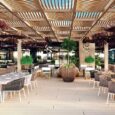Creating a comfortable environment in a commercial property is essential for attracting and retaining tenants, employees, and customers. Whether you’re designing an office building, retail space, or hospitality venue, several key elements contribute to the overall comfort and functionality of the space.
This article explores the fundamental aspects of interior design, lighting, furniture, and climate control that can transform your commercial property into a welcoming haven.
Interior Design: Crafting the Perfect Ambiance
The interior design of a commercial property sets the tone for the entire space. It reflects the brand’s identity and influences the mood and productivity of its occupants. To achieve a cohesive and appealing look, consider using a color palette that complements the intended use of the space. For instance, calming colors like blues and greens are ideal for office environments, while vibrant colors can energize retail spaces.
Additionally, incorporating natural elements such as plants and water features can enhance tranquility and improve air quality. Open layouts encourage collaboration in workspaces, while strategically placed partitions can offer privacy when needed. Thoughtful design not only enhances aesthetics but also optimizes functionality, ensuring every square foot serves a purpose.
Lighting: Illuminating the Space
Lighting plays a crucial role in the comfort and usability of a commercial property. Proper lighting can enhance productivity, create an inviting atmosphere, and highlight key architectural features. Natural lighting is ideal, as it boosts mood and reduces reliance on artificial sources. Large windows and skylights can flood spaces with sunlight, creating a bright and airy environment.
For artificial lighting, a combination of ambient, task, and accent lighting provides flexibility and depth. LED lighting is an energy-efficient choice that offers a variety of color temperatures to suit different needs. Dimmable fixtures can adapt to various activities, from focused work to relaxed social gatherings. The right lighting design not only enhances visibility but also elevates the overall experience of the space.
Furniture: Balancing Comfort and Functionality
Selecting the appropriate furniture is crucial in designing a comfortable commercial property. Furniture should align with the property’s purpose while offering comfort and durability. In office environments, ergonomic chairs and adjustable desks support employee health and productivity. In hospitality settings, plush seating and versatile arrangements cater to social interactions and relaxation.
The choice of materials also impacts comfort; breathable fabrics and supportive cushions provide long-lasting comfort. Modular furniture can adapt to changing needs, offering flexibility in space utilization. By investing in high-quality, functional furniture, property managers can create an environment that promotes well-being and efficiency.
Climate Control: Ensuring a Pleasant Atmosphere
Climate control is a critical element in maintaining comfort across all seasons. An efficient HVAC system is essential for regulating temperature, humidity, and air quality. In commercial properties, especially those located in varying climates like Ogden, selecting the right system is crucial. This is where the importance of commercial HVAC in Ogden comes into play, as it offers tailored solutions to meet specific regional needs.
The ideal climate control system should be energy-efficient, easy to maintain, and capable of adapting to different zones within the property. Smart thermostats and automated controls allow for precise adjustments, ensuring optimal comfort without wasting resources. Regular maintenance of HVAC systems not only extends their lifespan but also guarantees consistent performance and energy savings.
Additional Considerations: Enhancing Comfort
Beyond the core elements of design, lighting, furniture, and climate control, several additional factors contribute to a comfortable commercial property. Sound management is vital, especially in busy areas; acoustic panels and soundproofing materials can minimize noise disturbances. Accessibility features such as ramps, elevators, and clear signage ensure that the space is inclusive and easy to navigate for all visitors.
Technology integration is another aspect to consider. Smart technology can streamline operations, from automated lighting controls to digital wayfinding systems. These innovations enhance convenience and efficiency, creating a seamless experience for every occupant.
In conclusion, designing a comfortable commercial property involves a strategic blend of aesthetics, functionality, and technology. By focusing on interior design, lighting, furniture, and climate control, property managers can create environments that not only meet the practical needs of their occupants but also enhance their overall well-being. As businesses and tenants continue to prioritize comfort, investing in these key elements will ensure that your commercial property stands out as a desirable and thriving space.



